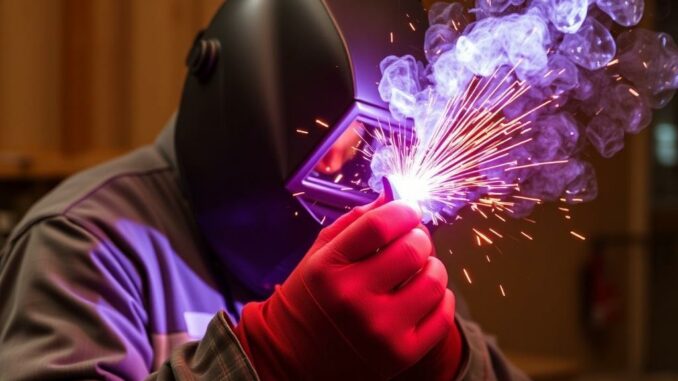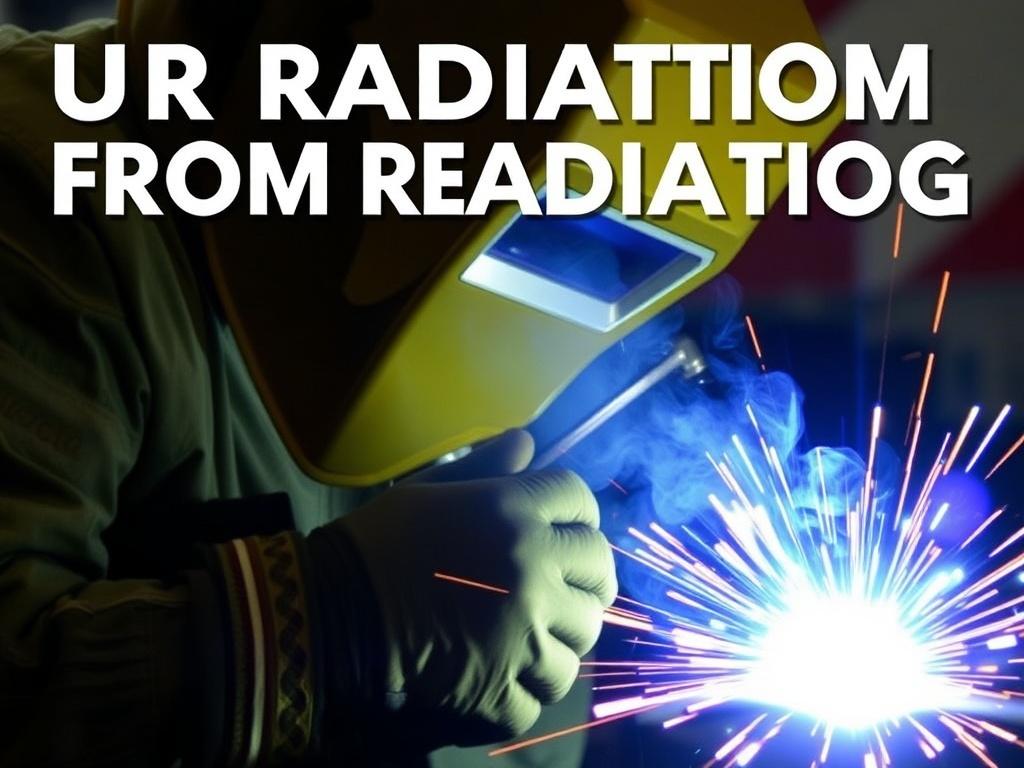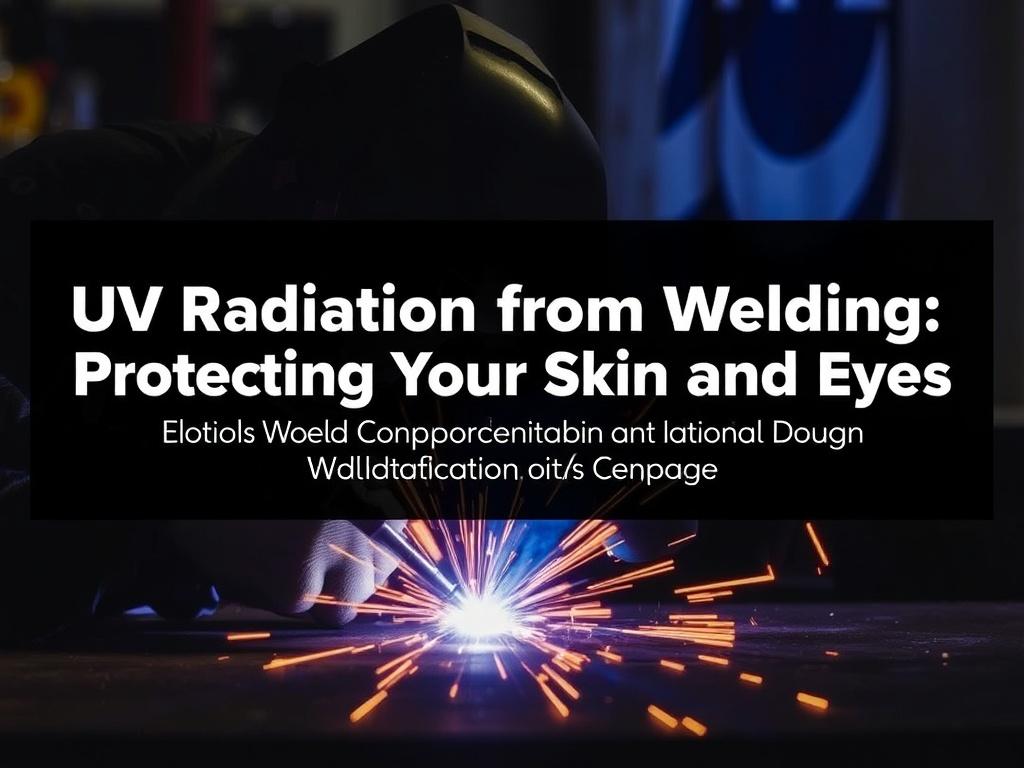
Welding is an essential skill in many industries, from construction to automotive repair to art. Yet, this powerful process comes with some hidden dangers — one of the most significant being exposure to ultraviolet (UV) radiation. Many welders and those around them underestimate the risks UV rays pose, especially to the skin and eyes. In this article, we will dive deep into the world of UV radiation from welding, explain why it matters, and most importantly, reveal effective ways to protect your skin and eyes from its harmful effects.
Understanding UV Radiation: What is it and how does welding create it?
Before we explore safety measures, let’s start at the beginning — understanding what ultraviolet radiation actually is. UV radiation is a type of electromagnetic energy emitted primarily by the sun, but also by artificial sources like welding arcs. It has shorter wavelengths than visible light, meaning it carries more energy and can penetrate the skin and eyes to cause damage.
Diving deeper, UV radiation is categorized into three types:
- UVA: The longest wavelength, it penetrates deeper into the skin, contributing to aging and some types of skin cancer.
- UVB: Medium wavelength, it mostly affects the surface layers of the skin and is a significant cause of sunburn and skin cancer.
- UVC: The shortest wavelength and most dangerous, typically absorbed by the ozone layer and does not reach the Earth’s surface naturally, but can be emitted by welding arcs.
When you weld, the intense electric arc emits a mixture of UVA, UVB, and UVC rays, making your exposure potentially very dangerous without proper protection.
The Welding Arc: A Potent Source of UV Radiation
The welding process involves creating an electric arc by passing current between an electrode and the metal workpiece. This arc generates extreme heat, enough to melt metals, but it also emits intense light including UV radiation. The UV radiation produced can be hundreds or thousands of times stronger than normal sunlight. This is why regular exposure without protective gear is never recommended.
Unlike natural sunlight, the UV light from welding is extremely concentrated and can cause instant damage. For instance, welders often experience arc eye — a painful inflammation of the cornea caused by UV exposure — even after a very short time without proper eye protection.
Health Risks of UV Radiation from Welding
Exposure to UV radiation from welding can result in serious and sometimes immediate health consequences. These affect both the skin and eyes and may include both acute and long-term effects. Understanding these risks in detail helps highlight why adequate protection is necessary.
Eye Damage: Understanding Arc Eye and More
The eyes are extremely vulnerable to UV radiation emitted during welding. The most common injury welders face is arc eye or welder’s flash. This condition is characterized by a painful burning sensation, redness, tearing, blurry vision, and even temporary vision loss.
Arc eye occurs when the cornea is inflamed due to UV light exposure, usually within just a few hours of intense welding without eye protection. Although symptoms typically resolve within 48 hours, repeated episodes or severe exposure can lead to permanent damage.
Besides arc eye, continued exposure to UV radiation also increases the risk of cataracts and pterygium — a growth on the eye’s surface that can impair vision.
Skin Damage: Beyond Sunburn
It’s easy to compare welding-related skin damage to sunburn, but the reality is welding UV rays can cause more acute and severe injuries. Welders may experience painful redness, blistering, and peeling, similar to severe sunburn on exposed parts of the body. Since the UV radiation from welding is so intense, even short exposures without protection can cause burns.
Long-term repeated exposure can increase the risks of premature skin aging, dark spots, and more alarmingly, skin cancer. These risks emphasize the importance of adequate coverage and sunscreen usage when working near welding operations.
Identifying Sources of UV Radiation at Welding Sites
UV radiation exposure isn’t just limited to the person holding the welding torch. Depending on the setup and materials, many parts of a welding site can become hazardous zones. Let’s outline common sources and scenarios that increase UV exposure risk.
| Source of UV Radiation | Description | Exposure Risk |
|---|---|---|
| Welding arc | The primary source of strong UV radiation during arc welding | High risk for welder and close-by workers |
| Reflected UV radiation | UV rays can bounce off shiny metal surfaces or surrounding materials | Medium risk to nearby personnel without direct exposure to the arc |
| Electric sparks and spatter | Small molten metal particles emitted during welding | Low to medium risk, usually secondary to arc UV radiation |
| Metal arc gouging and cutting | Processes using arcs similar to welding that emit UV radiation | Similar risk levels as arc welding |
Understanding these sources helps those working with or near welding operations to adopt effective protective strategies.
Protecting Your Eyes from UV Radiation
When it comes to eye protection in welding, the saying “better safe than sorry” could not be more appropriate. Your eyes are vital for your ability to work safely and enjoy life. Fortunately, technology and proper gear help keep welders safe from harmful UV exposure.
Welding Helmets and Masks: Your First Line of Defense
Welding helmets are specially designed to block UV radiation, visible light, and infrared radiation from the arc. They have a viewing window with filters that darken automatically or manually, allowing welders to see their work while being protected.
- Auto-Darkening Helmets: These helmets use sensors to detect the welding arc and automatically adjust the lens’ shade, providing continuous protection and convenience.
- Passive Helmets: Traditional helmets with a fixed dark lens that must be flipped into place before welding starts.
It’s important to select helmets that meet the standards set by organizations like ANSI (American National Standards Institute) or EN (European Norm) and have a UV protection rating of 100%. Regular inspection for cracks or scratches in the viewing window is crucial, as damage can compromise protection.
Safety Goggles and Glasses for Support
In addition to helmets, safety glasses or goggles with side protection can protect the eyes from UV radiation, flying debris, and sparks. These are especially useful when grinding, chipping, or working near welding operations but not performing welding yourself.
Additional Tips for Eye Safety
- Always wear eye protection before the arc is struck to prevent accidental exposure.
- Replace protective lenses at signs of wear or scratching.
- Use screens or curtains around the welding area to shield coworkers’ eyes from UV radiation.
Protecting Your Skin from UV Radiation
Skin protection might sometimes be overlooked compared to eye protection, but it is equally crucial. Exposure to UV radiation not only causes painful burns but can contribute to serious chronic conditions like skin cancer.
Protective Clothing: The Shield Your Skin Needs
The best way to protect your skin during welding is with properly designed clothing:
- Flame-resistant (FR) clothing: Specifically made to resist sparks and molten metal while offering strong UV protection.
- Long sleeves and pants: Cover as much skin as possible to minimize UV exposure.
- Leather gloves: Protect hands not only from burns but UV radiation.
- Neck and face covers: Use welding hoods or scarves to protect exposed areas like the neck and parts of the face around the helmet.
Avoid synthetic fabrics such as polyester or nylon, which can melt and cause further injury under high heat conditions.
Using Sunscreen for Additional Protection
Even with protective clothing, some skin may be exposed. Applying a broad-spectrum sunscreen with a high SPF rating to all exposed areas is recommended. Sunscreen acts as an additional armor against UV rays especially UVA and UVB.
Tips for Using Sunscreen at Welding Sites
- Choose water-resistant formulas since sweating is common during welding.
- Apply generously and reapply every two hours or after heavy sweating.
- Don’t forget often-missed areas like behind the ears, neck, and the backs of hands.
Workplace Measures to Minimize UV Radiation Exposure

A well-protected welding environment benefits everyone on site. Employers and workers need to collaborate to reduce UV exposure through practical workplace controls.
Engineering Controls
- Welding Screens and Curtains: These barriers intercept UV radiation, shielding coworkers from indirect exposure.
- Local Exhaust Ventilation: Helps reduce airborne contaminants generated during welding, though it does not reduce UV radiation itself.
- Proper Lighting: Adequate ambient lighting helps workers avoid shadowed areas where they might remove protection.
Administrative Controls
- Training Programs: Educate workers about UV radiation hazards and protective practices.
- Scheduling: Plan welding tasks to limit consecutive exposure or restrict non-essential personnel access during welding.
- Signage: Clearly mark welding areas with warning signs to alert people of UV radiation risks.
Regular Monitoring and Health Checks
Employers should conduct regular workplace inspections to ensure UV protection measures are in place and equipment is functioning correctly. Additionally, periodic health screenings for welders focusing on skin and eye health can detect early signs of UV damage.
Common Myths and Misconceptions About Welding UV Radiation

Despite the clear dangers, many myths persist that downplay the risks associated with UV radiation from welding. Here are some common misconceptions:
| Myth | Reality |
|---|---|
| “UV radiation from welding only affects the welder’s eyes.” | Both the skin and eyes are at risk. Unprotected exposed skin can get severe UV burns. |
| “Welding indoors means there’s no UV risk.” | Welding arcs produce intense UV radiation regardless of location; indoor welding can be equally hazardous. |
| “Normal sunglasses are enough protection.” | Only specially rated welding helmets and goggles block all harmful UV rays effectively. |
| “You only need protection while the arc is on.” | UV radiation can linger and reflected rays may cause injury even a few seconds before or after welding. |
Conclusion: Staying Safe While Welding
UV radiation from welding is a hidden but serious hazard. Without appropriate precautions, you can suffer painful and permanent damage to both your eyes and skin. The good news is that with the right knowledge and protective gear, you can enjoy the art and skill of welding without compromising your health.
Remember to always wear qualified welding helmets with UV protection, dress in flame-resistant clothing covering all exposed skin, use sunscreen where necessary, and apply workplace safety measures like welding screens and proper training. By respecting the power of UV radiation and taking safety seriously, you protect not only yourself but everyone around you.
Whether you’re a seasoned welder or new to the craft, prioritizing UV radiation safety ensures your welding career is long, healthy, and injury-free. Stay informed, stay protected, and keep making sparks — safely.
